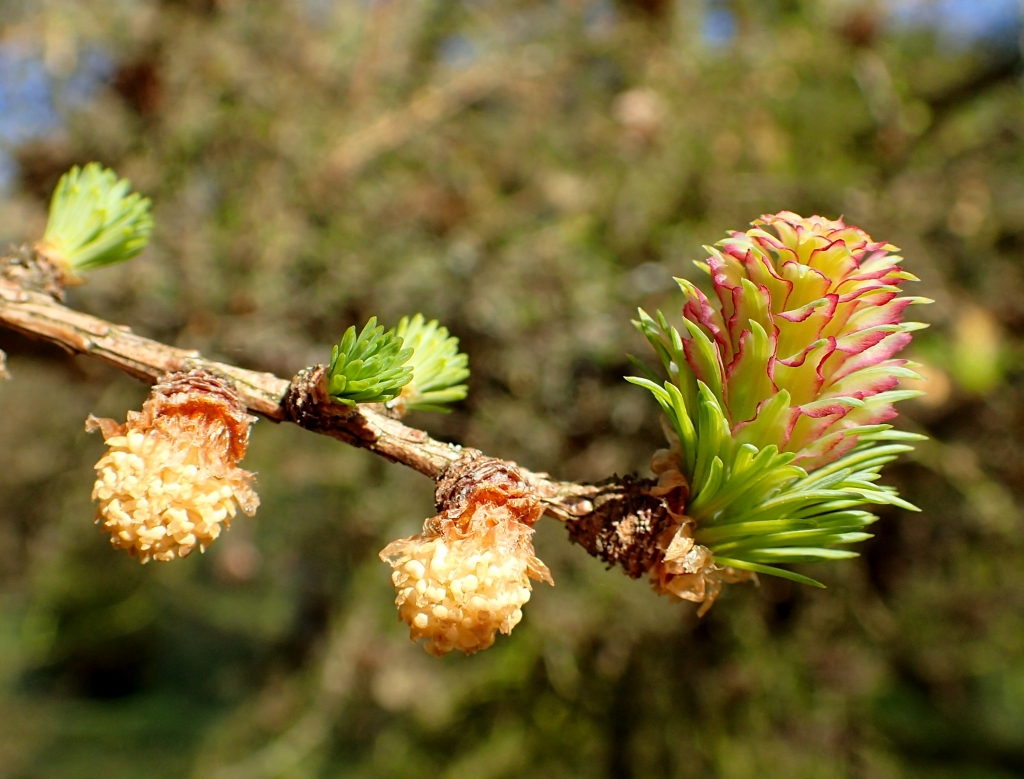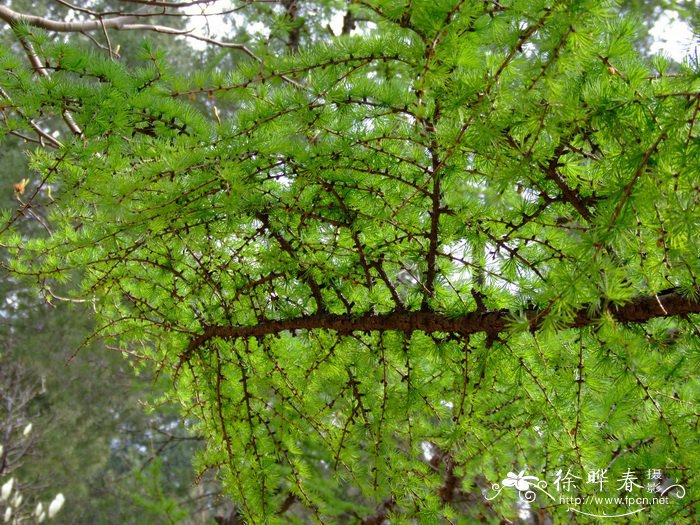Larix gmelinii var. principis-rupprechtii, first described in 1926 by (Mayr) Pilger is commonly called Prince Rupprecht larch as well as ŠŽŠŒ—轊¶æ¾ (hua bei luo ye song) in the Chinese language. It was presumably named in honor of Rupprecht, Crown Prince of Bavaria, Germany. It is a specific variety of Dahurian larch that differs from the typical variety in the following ways.
- Seed cones are the largest seen in this species 0.8 to 1.2 inches (2 - 4 cm) long and 0.8 to 1 inch (2 - 2.5 cm) wide with 25 to 45 seed scales that slightly spit at maturity toward the cone tip.
- Young shoots are yellowish- or orange-brown in color and usually glabrous, but sometimes bearing slightly brown pubescence.
- First-year long branchlets are stout, 0.056 to 0.1 inch (1.4 - 2.5 mm) in diameter with short branchlets 0.12 to 0.16 inch (3 - 4 mm) in diameter.
Distribution. This variety is native to Korea; Russia's Amur basin; and China: Wutai Shan in northern Shanxi provence where the type was first collected, northwestern Henan provence, and north to Weichang in Hebei province, growing at elevations of 1,800 to 9,000 feet (600 to 2,800 m) above sea level, usually on rocky slopes where annual precipitation is from 24 to 32 inches (600 - 900 mm), and the climate is milder when compared to the type variety. It grows in mixed stands with
Abies nephrolepis, Picea asperata and
P. neoveitchii below 7,700 feet (2400 m), and on Wutai Shan it forms pure forests above this elevation. Prince Rupprecht larch is hardy to USDA Zone 4 (cold hardiness limit between -30º and -20ºF (-34.3 and -28.9°C)


